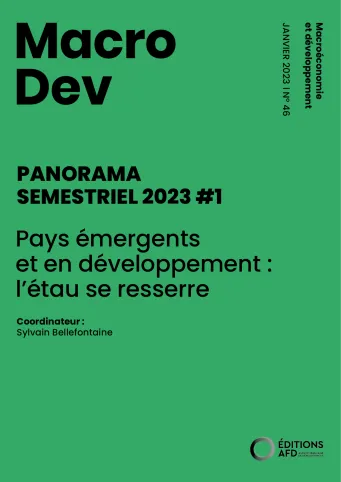Share the page
MacroDev - Semestrial Panorama 2023 #1
Published on

The dual shock of the health crisis and the war in Ukraine has pushed up inflation to an extent not seen in developed countries since the 1979 oil shock and the Iran-Iraq war. This shock has put an end to two decades of disinflation imported from China and other emerging and developing countries (EDCs) and over a decade of ultra-accommodative monetary policies. Indeed, Central Banks have since implemented more restrictive monetary policies, firstly in developed countries and Latin America, then in the other EDCs. Coupled with fluctuations in the prices of agricultural commodities and energy, and the ups and downs of the Chinese economy, slowed down by the “Zero Covid” policy and the vulnerabilities of its real estate sector, inflation and monetary tightening profoundly changed the paradigm of the global economy in 2022. The International Monetary Fund (IMF) revised down its economic growth forecast in July, then in October, for virtually all geographical areas for 2022 and 2023
Useful Information
-
Authors
-
Jade CASTANER, Maëlan LE GOFF, Emmanuelle MANSART MONAT, Morgane SALOME, Floriane VALLEE, Sylvain BELLEFONTAINE, Vincent JOGUET, Benoît JONVEAUX, Amaury MULLIEZ, Alix VIGATO
-
Coordinators
-
Edition
-
46
-
Number of pages
-
42
-
ISSN
-
2116-4363
-
Collection
-
Macrodev
-
Other languages
